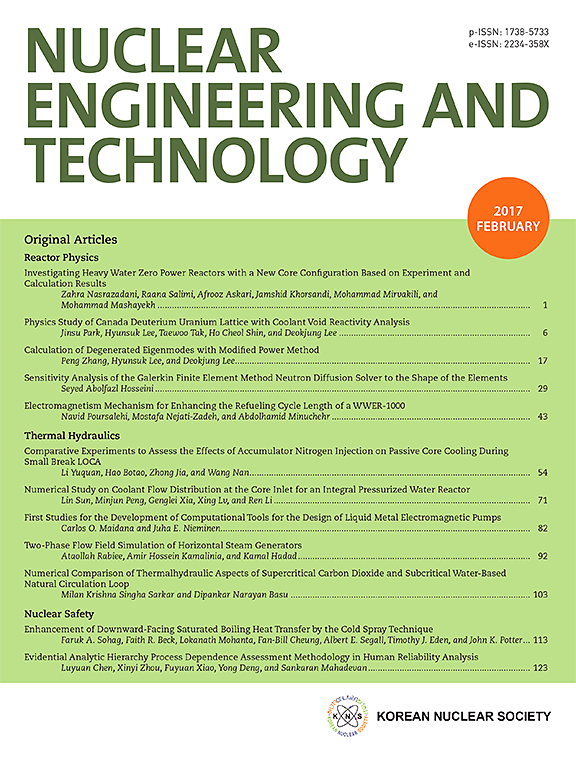A review of COHRISK: Multihazard risk quantification software for nuclear power plants
IF 2.6
3区 工程技术
Q1 NUCLEAR SCIENCE & TECHNOLOGY
引用次数: 0
Abstract
A combination of more than one natural hazard can occur simultaneously by their inherent correlation or by coincidence. One well-known multihazard incident, the Tohoku earthquake-tsunami in Japan 2011, led to a core damage accident at the Fukushima Daiichi nuclear power plant (NPP) and caused significant damage to its community. But despite this accident raising significant awareness of multihazard safety in the nuclear safety engineering community, multihazard risk quantification methods and tools for NPPs are relatively less investigated when compared to those for single hazards. At the same time, some multihazard tools developed outside the nuclear engineering industry are inadequate for extension to NPPs because of the complex NPP systems and the response correlation between the systems, structures, and components. To resolve this problem, the authors have been conducting a series of projects on developing a method for multihazard risk quantification of NPP systems and have launched the related quantification software, Combined Hazard RISK (COHRISK). This paper presents a review of COHRISK including its conceptual background, methodology development, architecture, and future work.
COHRISK:核电厂多重危害风险量化软件综述
一种以上自然灾害的组合可能因其固有的相关性或巧合而同时发生。一个众所周知的多重危害事件是 2011 年的日本东北地震-海啸,它导致福岛第一核电站(NPP)发生堆芯损坏事故,并对其社区造成了重大损失。尽管这次事故提高了核安全工程界对多重危害安全的认识,但与针对单一危害的方法和工具相比,针对核电站的多重危害风险量化方法和工具的研究相对较少。同时,由于核电厂系统复杂,系统、结构和部件之间存在响应相关性,核工程行业以外开发的一些多重危害工具不足以推广到核电厂。为解决这一问题,作者开展了一系列项目,开发核电站系统多危害风险量化方法,并推出了相关量化软件--组合危害风险软件(COHRISK)。本文对 COHRISK 进行了综述,包括其概念背景、方法开发、架构和未来工作。
本文章由计算机程序翻译,如有差异,请以英文原文为准。
求助全文
约1分钟内获得全文
求助全文
来源期刊

Nuclear Engineering and Technology
工程技术-核科学技术
CiteScore
4.80
自引率
7.40%
发文量
431
审稿时长
3.5 months
期刊介绍:
Nuclear Engineering and Technology (NET), an international journal of the Korean Nuclear Society (KNS), publishes peer-reviewed papers on original research, ideas and developments in all areas of the field of nuclear science and technology. NET bimonthly publishes original articles, reviews, and technical notes. The journal is listed in the Science Citation Index Expanded (SCIE) of Thomson Reuters.
NET covers all fields for peaceful utilization of nuclear energy and radiation as follows:
1) Reactor Physics
2) Thermal Hydraulics
3) Nuclear Safety
4) Nuclear I&C
5) Nuclear Physics, Fusion, and Laser Technology
6) Nuclear Fuel Cycle and Radioactive Waste Management
7) Nuclear Fuel and Reactor Materials
8) Radiation Application
9) Radiation Protection
10) Nuclear Structural Analysis and Plant Management & Maintenance
11) Nuclear Policy, Economics, and Human Resource Development
 求助内容:
求助内容: 应助结果提醒方式:
应助结果提醒方式:


